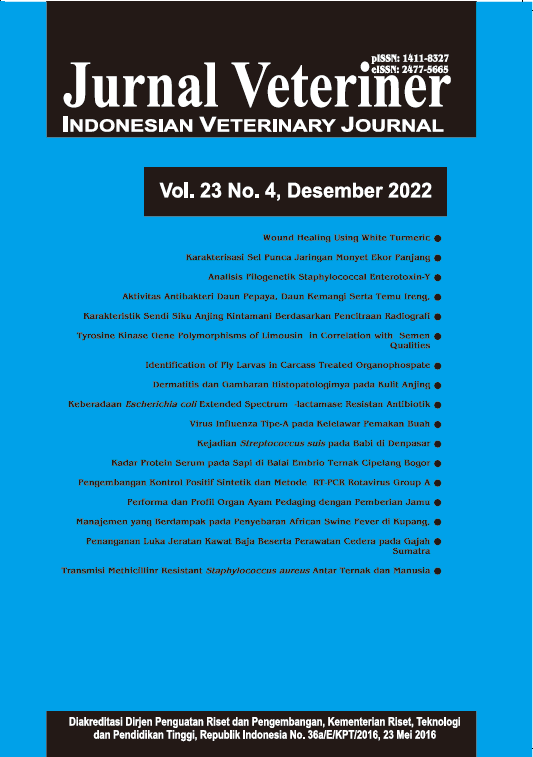Deteksi Virus Influenza Tipe-A pada Spesies Kelelawar Pemakan Buah Rousettus amplexicaudatus di Kabupaten Cianjur, Jawa Barat
Abstract
Bats are the natural reservoir and host for most human and animal viruses. There are more than 1,200 species of bats that have been identified, 20% or 239 species of which are spread across Indonesia. The high diversity in bats with the presence of various cell types and receptors has the potential to cause bats to become a source of transmission for various types of viruses, especially type-A influenza virus. Early detection of type-A influenza virus in bats is necessary considering the global distribution, species diversity and high population density of bats in Indonesia. and potential spread to other species. In this study, a total of 101 bat rectal swabs were collected from Cianjur Regency, West Java. Identification of bat species was carried out based on morphological and morphometric characteristics. From the identification results, four bat species were obtained, namely Rousettus amplexicaudatus Rhinolophus sp., Hipposideros sp. and Miniopterus sp. Influenza virus type-A was detected by reverse transcriptasepolymerase chain reaction (RT-PCR) based on the matrix gene. Of the 56 R. amplexicaudatus swabs rectal samples, 21 (37.5%) were positive for the matrix gene of influenza virus type-A. Of the 21 positive samples of type-A influenza, all of these samples were negative for the H5N1 influenza A virus subtyping test. Early detection of this virus is expected to minimize its destructive impact on global health by implementing control measures.



















